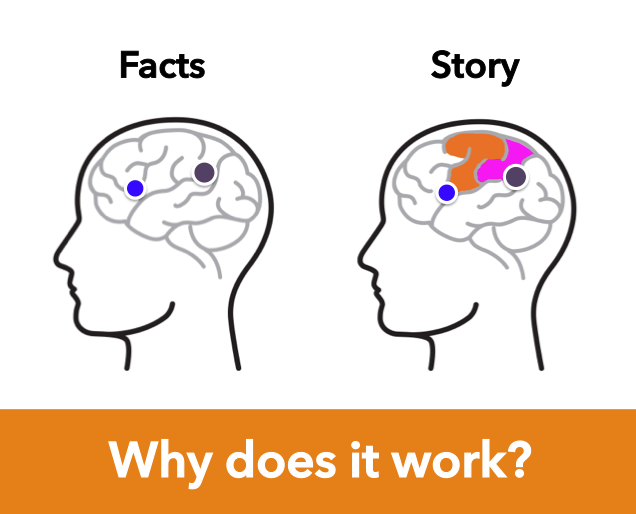This post is the second in a three-part series summarizing our presentation on messaging at this year’s California Resource Recovery Association (CRRA) conference: “Not Just the Facts, Ma’am: Getting Your Message to Matter.”
 Which is more powerful: presenting environmental facts and a call to action in a bullet-point list, or embedding them in a narrative? As you may have guessed, the latter! Stories help us understand cause and effect and how things fit together. They also let us access emotions, making the message more memorable.
Which is more powerful: presenting environmental facts and a call to action in a bullet-point list, or embedding them in a narrative? As you may have guessed, the latter! Stories help us understand cause and effect and how things fit together. They also let us access emotions, making the message more memorable.
Storytelling has been part of the human experience for a very long time—just think of the narratives depicted in prehistoric cave paintings. The human brain has evolved to work in narrative structures; it’s how we make sense of the world.
To understand what makes storytelling so effective, let’s look at what happens in the brain. When we absorb facts, the brain gets activated in the areas responsible for language recognition and decoding words into meaning. However, when we listen to a narrative, additional areas in the brain show activity: those responsible for directing physical motion and tracking sensations. For example, when we hear metaphors like “he had leathery hands,” the brain’s sensory cortex — which perceives texture through touch — is stimulated. And the more parts of our brains are engaged, the better our attention and recall.
How can we use these insights in environmental outreach work? There are many ways to weave in narratives. For example, use positive stories about real people to promote a behavior. It may take a bit of research to find the right “hero” for your story, but you can’t beat the persuasive value (and norming effect!) of a local couple sharing their enthusiasm about, say, cooking with leftovers, along with tips in their own words and a photo showing them having fun in the kitchen while reducing waste.
If you’re dealing with frequent barriers to practices you’re trying to promote, try a “success story” of somebody who has overcome these challenges. Their authentic voice and the emotional connection their story can make with your audience will be more effective than any list of facts.